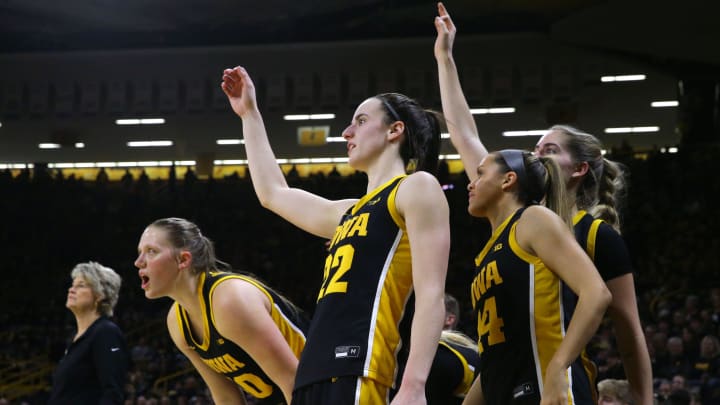Big Ten Schools Signal Athlete Payments Must Follow Title IX Rules

The highly publicized House v. NCAA antitrust lawsuit stands on the precipice of being the single most impactful moment in the history of college athletics. While still pending judicial approval, a proposed settlement agreement in the case will relinquish the central tenant of the NCAA’s “amateur athletics” model and allow schools to compensate student-athletes directly — the non-compulsory payments will be distributed as NIL payments via a revenue-sharing system.
Reports of the proposed settlement have outlined two key functions: a backward-facing function to compensate recent college athletes roughly $2.7 billion in NIL backpay and a forward-facing function to establish a revenue-sharing model for collegiate athletes. The approval of this settlement is still uncertain. Judge Wilkin, who presides over the case, has yet to approve the settlement; certain antitrust questions cast a shadow over the legality of the forward-facing revenue-share model that has been propositioned.
Pay-for-play, a once taboo concept, is nothing new. Over the last three years, the trend of NIL collective salaries to players is the most overt form of athletic compensation from boosters ever seen, but prior practices of under-the-table payments, gifted cars, and no-show jobs have existed within the NCAA in perpetuity. If the NIL era has clarified anything, it is that student-athlete compensation is imperative to generating athletic success.
Now that the NCAA has waved the proverbial white flag on maintaining its concept of amateurism, NCAA member institutions are swiftly searching for answers on how to implement their own pay-for-play, this time using money from their own ledger to attract athletes. Big Ten schools have been the first to come forward and indicate that Title IX will play a large factor in how revenue-sharing systems will be implemented. According to statements from leadership at the University of Illinois and Ohio State University, athlete compensation will be carefully tailored to comply with Title IX standards.
Incoming Ohio State Athletic Director Ross Bjork clarified the university’s position when talking to The Columbus Dispatch: “We are committed to Title IX… we have to be. It’s the right thing. But it’s also federal law.” Bjork further indicated that Ohio State’s legal interpretation and guidance regarding Title IX led them to conclude that any direct athletic compensation would have to be proportionate to the enrollment demographics at Ohio State. For the case of Ohio State, this would mean that roughly 52% of direct athlete payment funding would go to female athletes –– $11.4 million of the projected $22 million cap Big Ten institutions will be allowed to pay their athletes under the reported settlement terms.
Yesterday at the University of Illinois, Athletic Director Josh Whitman mirrored Ohio State’s sentiments about Title IX compliance (if the House settlement is approved) in an annual media roundtable. Both athletic directors have indicated that the roughly eleven million dollars allocated to male athletes would be focused on men’s basketball and football. These are the only two sports that consistently operate at a profit at schools nationwide, generating massive revenue through ticket sales, merchandise, and, most notably, lucrative media rights deals.
Mit Winter, a college sports attorney at Kennyhertz Perry LLC., believes the recent interpretations by Big Ten institutions are a conservative approach to Title IX: “One of the three parts of the Title IX analysis for college athletics programs is whether financial assistance (i.e. athletic scholarship dollars) provided by a school to its varsity athletes are awarded proportionately based on the school’s male and female student body population… Ohio State and other Big Ten schools are assuming that NIL compensation paid to athletes falls into this same category of “financial assistance” as athletic scholarship dollars.”
Direct payment of athletes is a novel concept that has yet to be adjudicated under Title IX. Winter sees the categorization of this type of payment to exist in a legal gray area, “NIL compensation is a market-based payment made in return for a service. So those payments are nothing like an athletic scholarship… by treating NIL payments as if they fall into the “financial assistance” category, Ohio State and other schools taking the same approach are being cautious and are likely trying to avoid claims they’re violating Title IX based on how they make NIL payments.”
While admittedly riskier, less conservative approaches are believed to exist. Winter supposes NCAA institutions could “take the position that NIL payments aren’t 'financial assistance' as defined by Title IX and that they don’t have to be paid out in proportion to a school’s male and female student body. A school could take the position that NIL payments are payments in return for services and that those payments should be made based on the fair market value for those services or for the use of the athletes’ NILs that are performing those services.”
With two of the nation’s prominent athletic departments articulating conspicuous and careful approaches to Title IX's application to athletic payment, it will be interesting to see if other schools universally adopt what appears to be the Big Ten’s current posture. Challenges to this Title IX interpretation could allow schools massive recruiting advantages in football and men’s basketball recruiting in a revenue-sharing system.
NIL collectives have shown that when left in the hands of the free market, the vast majority of pay-for-play compensation goes to male revenue athletes. It has been reported that approximately 95% of NIL collective dollars (money mainly tethered to athletic performance and not endorsement deals) go to men. Without Title IX's application to instiutional athletic payments, it is unlikely that any semblance of gender equity would be realized.
With legal ambiguity looming, the best path forward would be for the Office for Civil Rights (OCR), the Department of Education sub-agency that enforces Title IX, to write a memo clarifying its position on the issue. Since the inception of NIL, activists have rallied and petitioned the OCR to challenge the previously mentioned disparate payments from NIL collectives; those activists have been met with nothing but silence from the government –– a bad sign for resolving uncertainty and an indication that the restructuring of college sports will be anything but straightforward.
